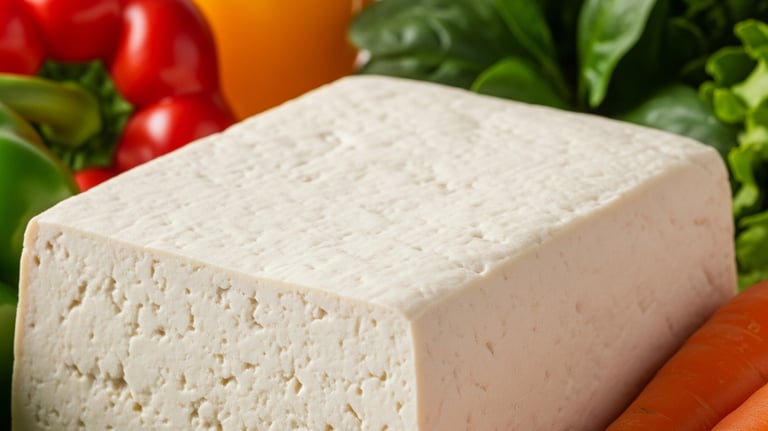High Protein Vegetable Based Tofu: Nestlé's Latest Innovation
SUSTAINABILITYALTERNATIVE PROTEINSFROZEN FOOD


This is an AI generated illustration and does not represent actual product or service.
Nestlé has once again stepped into the plant-based innovation arena with its recently published patent (WO2025093591A1), titled Protein Gels Rich in Vegetable Content. This invention aims to create a tofu-like product where vegetables—not grains or legumes—take center stage. Let’s break down the problem Nestlé is solving, how they’re doing it, and what this could mean for the future of plant-based foods.
The Problem: Bridging the Gap in Vegetable-Centric Protein Gels
While tofu and similar products have long served as meat substitutes, they’re typically made from soy or other legumes, with vegetables playing a secondary role. Nestlé identified a gap in the market: there’s no fresh, vegetable-forward tofu-like product where veggies are the primary ingredient.
Existing products, such as VegBlock, incorporate vegetables but prioritize grains and pulses. Nestlé’s challenge was to develop a protein gel where vegetables form the bulk of the matrix—a tricky task because vegetables are mostly water and carbohydrates, which are thermodynamically incompatible with proteins.
The Solution: A Vegetable-Protein Hybrid Gel
Nestlé’s innovation lies in creating a stable gel network where plant proteins form a continuous phase, while vegetable polysaccharides remain dispersed. Key components of the gel include:
30–90% vegetable puree (e.g., spinach, carrot, bell pepper)
10–25% plant protein isolate/concentrate (e.g., soy, pea)
Optional additives like vegetable oil (2–15%), sodium bicarbonate (0.1–1%), and spices
Critical Technical Wins:
Water-to-Protein Ratio: Maintained at ≤6 to ensure gel stability.
pH Adjustment: Sodium bicarbonate (0.5%) neutralizes acidic vegetables (e.g., bell pepper, tomato) to improve gel texture.
Fiber Management: High-pectin vegetables (like carrots) yield softer gels, while low-pectin options (like spinach) create firmer textures.
Potential Products & Market Impact
The patent describes versatile formulations, including a spinach-based gel with shiitake mushrooms and cumin, a carrot-based version with pistachios, and a red bell pepper gel with smoked paprika. These products can be steamed, retorted, or frozen, making them adaptable for retail and food service.
If commercialized, this innovation could:
Encourage higher vegetable consumption by making them the main ingredient.
Offer a cleaner-label alternative to processed meat substitutes.
Open doors for region-specific variations, like beetroot gels in Europe or pumpkin gels in the U.S.
What’s Next?
While the technology is promising, Nestlé will need to ensure affordability and consumer appeal. If successful, we might soon see "vegetable tofu" on store shelves—bridging the gap between nutrition and convenience in plant-based eating.




